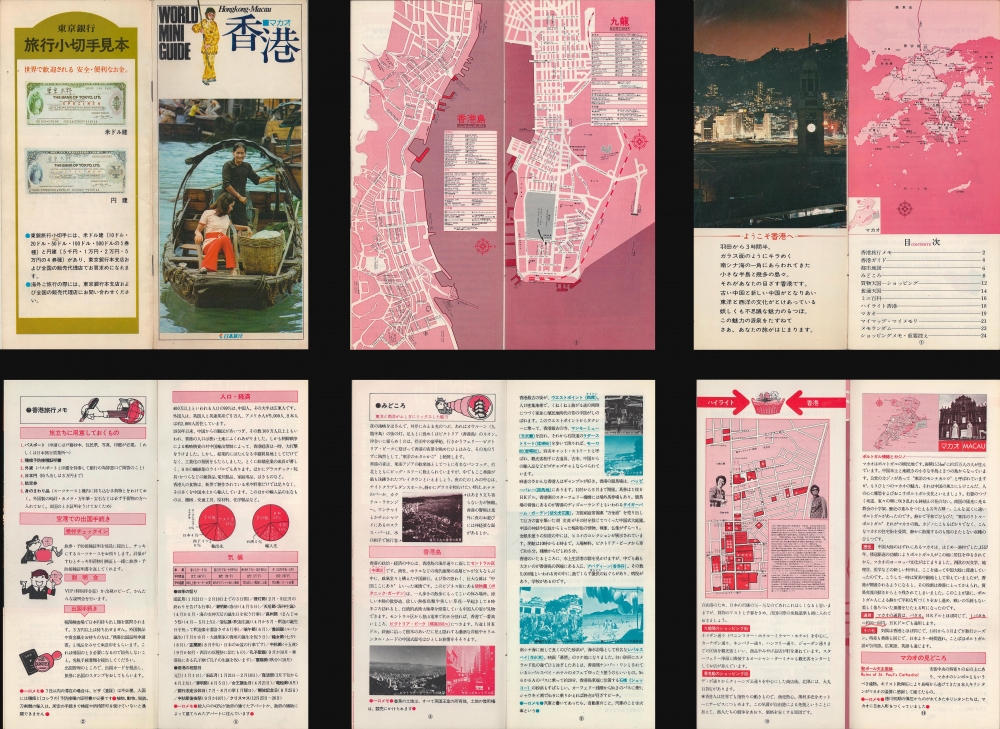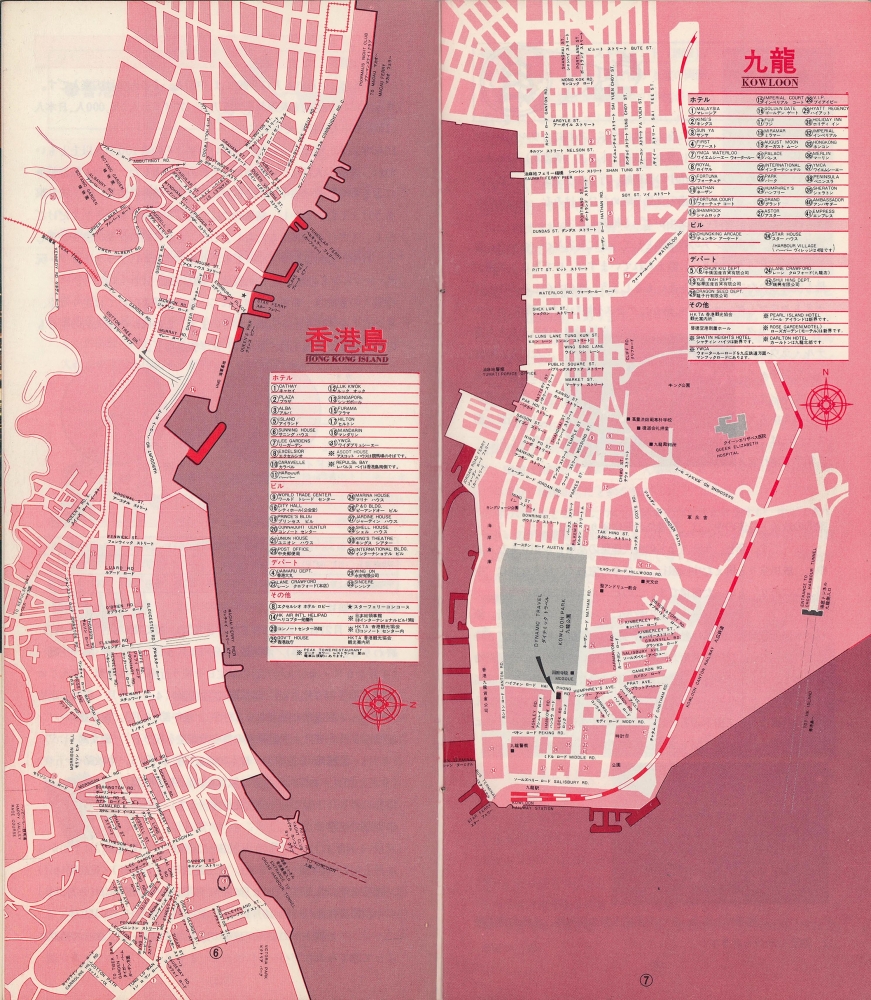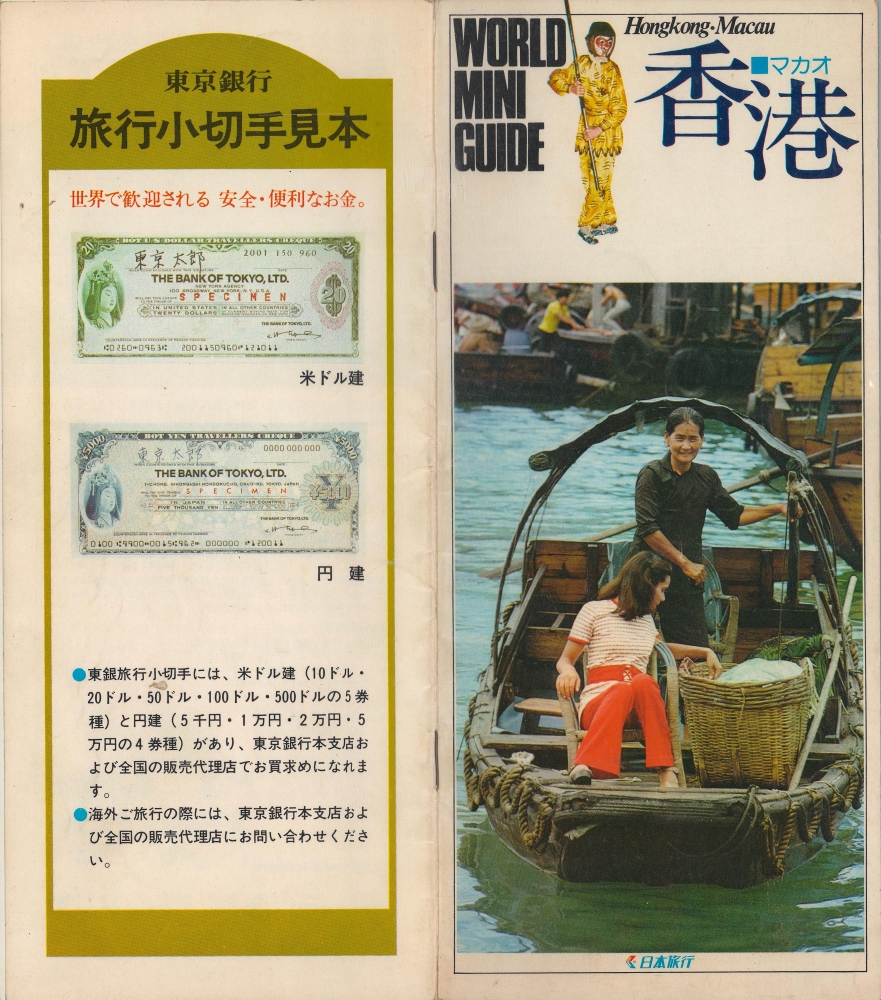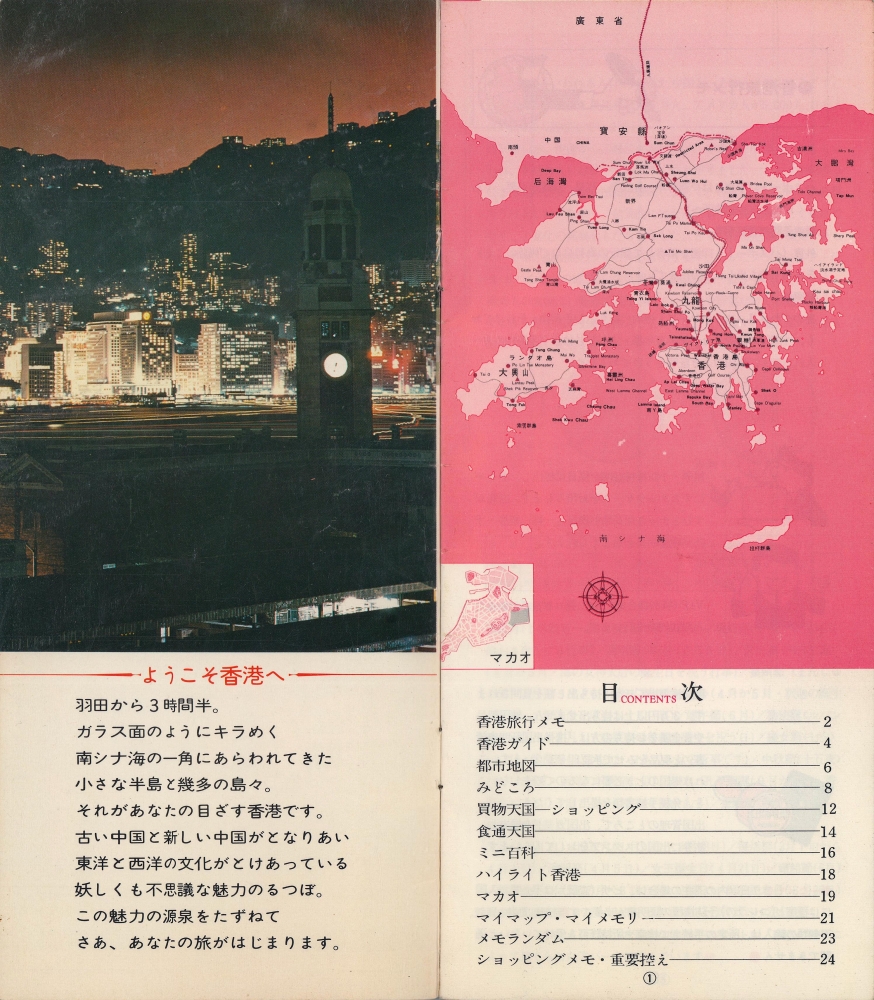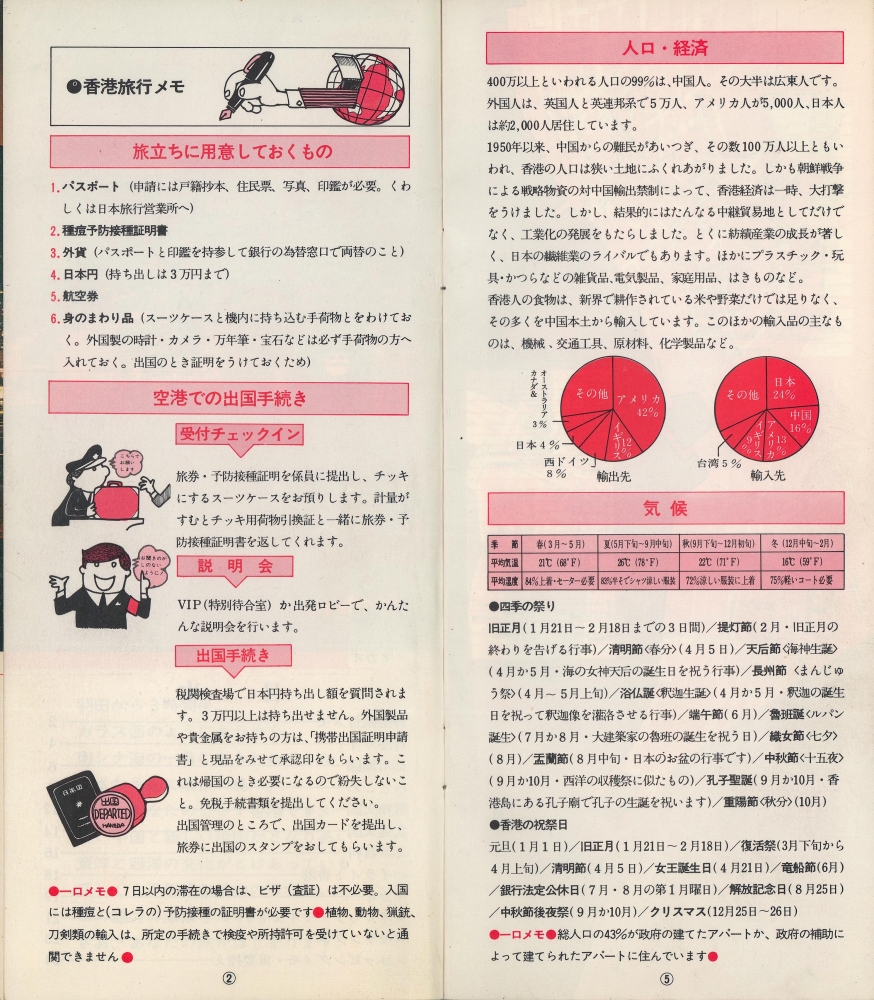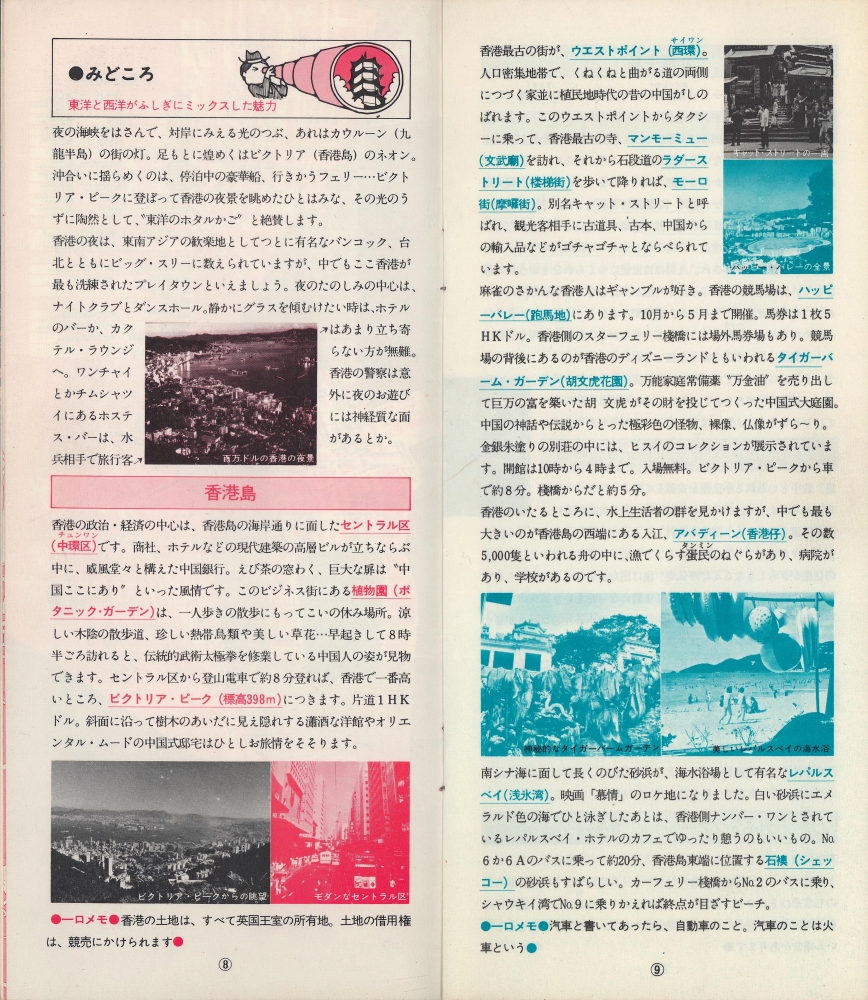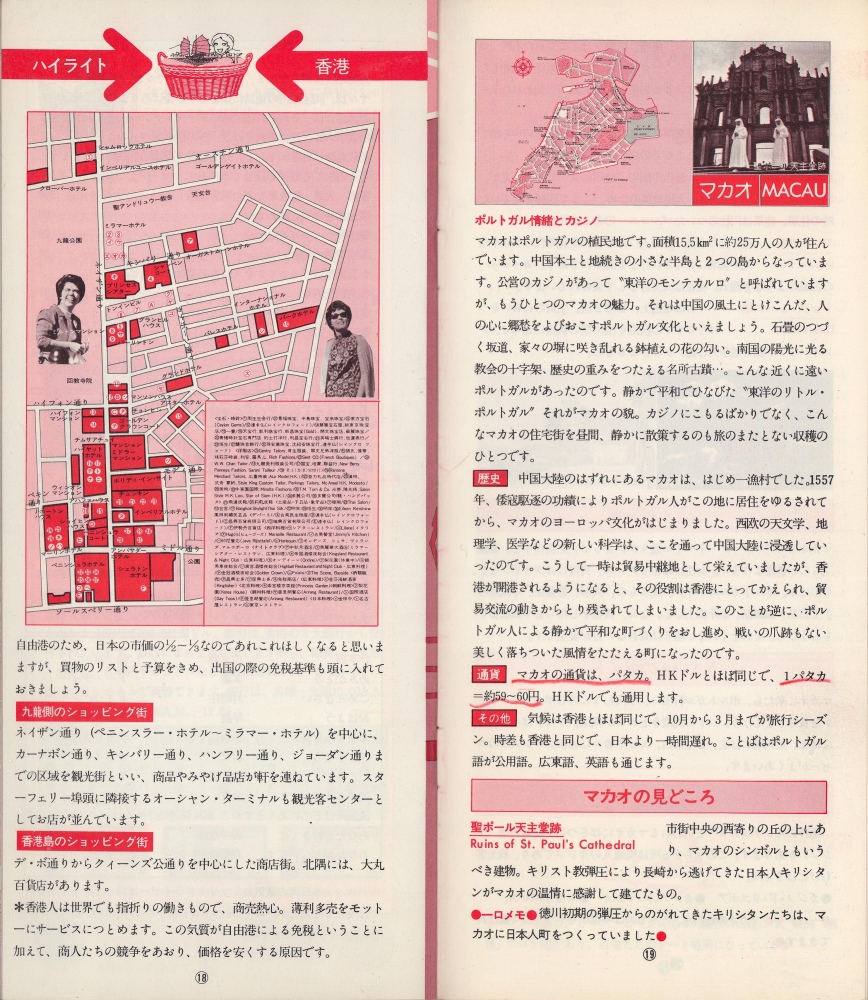1980 Japanese Hong Kong Macao Tourism Brochure
HKMacaoMiniGuide-unknown-1975$200.00

Title
World Mini Guide: Hongkong Macau. / 香港 マカオ
1975 (undated) 8.5 x 7.5 in (21.59 x 19.05 cm) 1 : 20400
1975 (undated) 8.5 x 7.5 in (21.59 x 19.05 cm) 1 : 20400
Description
An instructive c. 1975 Japanese-language tourist brochure for Hong Kong and Macao. The maps and information therein reflect the growing cultural and economic ties between Hong Kong and Japan at the time.
Transportation lines and stations are marked, including the Peak Tram towards top-left, the Star Ferry, just above the title of the Hong Kong Island map, and the Hong Kong Tramway. Kowloon railway station, the terminus of the Kowloon-Canton Railway, here at the southern tip of Kowloon, was relocated in 1975 to Hung Hom, just east of the entrance to the Cross-Harbour Tunnel. This map also predates the opening of Hong Kong's world-renowned Mass Transit Railway (MTR) system, combining subway, bus, and rail services akin to the MTA system in New York City, only more seamlessly integrated.
The back cover includes an advertisement for the Bank of Tokyo (東京銀行), which was especially known for its international business, including developing an early system for settling payments between Japanese yen and Chinese renminbi. The table of contents page has a broader scope map of Hong Kong including outlying islands, an inset map of Macao, and connections with Mainland China (at Bao'an County 寶安縣, later to become the Shenzhen Special Economic Zone). Subsequent pages include helpful reminders for travelers, information on customs and immigration procedures, statistics about Hong Kong's population, economy, climate, history, and famous sites, a map and information on shopping districts of Hong Kong Island and Kowloon, and information on Macao.
A Closer Look
Following the composite image, the first image above consists of two maps. At left is a map of the most developed part of Hong Kong Island, oriented towards the west with north at right, while the map at right focuses on the southern part of Kowloon, including the neighborhoods of Tsim Sha Tsui, Yu Ma Tei, and Mong Kok. Throughout, the locations of hotels (including the Excelsior, which the original owner has circled), notable buildings (city hall, the post office, etc.), department stores, and other important sites such as the Japanese Consulate and Hong Kong Tourism Association (香港観光協会), are highlighted. Additional sites are noted, such as police stations, parks, religious sites, the Happy Valley Race Course, hospitals, and the Poorman's Nightclub, which was a night market with stalls selling food, inexpensive goods, and clothing.Transportation lines and stations are marked, including the Peak Tram towards top-left, the Star Ferry, just above the title of the Hong Kong Island map, and the Hong Kong Tramway. Kowloon railway station, the terminus of the Kowloon-Canton Railway, here at the southern tip of Kowloon, was relocated in 1975 to Hung Hom, just east of the entrance to the Cross-Harbour Tunnel. This map also predates the opening of Hong Kong's world-renowned Mass Transit Railway (MTR) system, combining subway, bus, and rail services akin to the MTA system in New York City, only more seamlessly integrated.
The back cover includes an advertisement for the Bank of Tokyo (東京銀行), which was especially known for its international business, including developing an early system for settling payments between Japanese yen and Chinese renminbi. The table of contents page has a broader scope map of Hong Kong including outlying islands, an inset map of Macao, and connections with Mainland China (at Bao'an County 寶安縣, later to become the Shenzhen Special Economic Zone). Subsequent pages include helpful reminders for travelers, information on customs and immigration procedures, statistics about Hong Kong's population, economy, climate, history, and famous sites, a map and information on shopping districts of Hong Kong Island and Kowloon, and information on Macao.
Historical Context
As Japan's postwar economic recovery gained steam in the 1960s, the country's businesses sought new outlets for investment and Hong Kong became one of their primary destinations. Despite bad memories of the Japanese invasion and occupation of Hong Kong during World War II, business and cultural links blossomed by the 1970s, and increased further in the 1980s, in part because of the opening of mainland China to foreign tourism and investment. Foreign investment from Japan and elsewhere helped to boost Hong Kong's economy, while the city's population grew substantially from both domestic growth and migrants from mainland China. Therefore, by the 1970s, the most developed parts of the city had become among the most densely populated on Earth and its streets were clogged with cars and pedestrians, the impetus for instituting the MTR system mentioned above.Publication History and Census
This brochure was distributed by an unknown publisher; the bottom of cover includes the text 'Travel Japan' (日本旅行), but it is unclear if this was an organization or simply a tagline. The brochure is undated, but the location of the railway station suggests a date no later than 1975, while the presence of the Cross-Harbour Tunnel indicates a date no earlier than 1972. We are unaware of any other examples of this brochure in institutional collections or on the market.Condition
Very good. Folding brochure secured by two staples.

